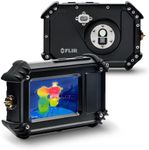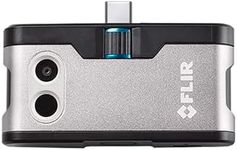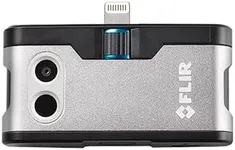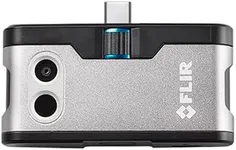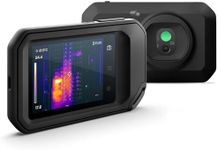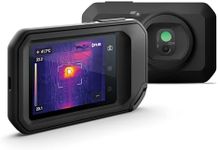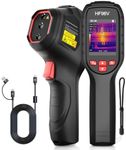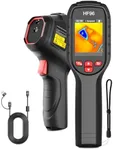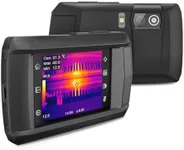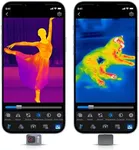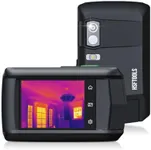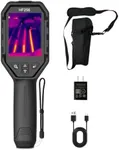Buying Guide for the Best Thermal Infrared Cameras
Choosing the right thermal infrared camera can be a bit overwhelming, but understanding the key specifications can help you make an informed decision. Thermal infrared cameras are used to detect heat patterns and temperature differences, which can be useful in various applications such as building inspections, electrical inspections, and even medical diagnostics. To find the best fit for your needs, consider the following key specifications and how they align with your intended use.ResolutionResolution refers to the number of pixels in the thermal image. Higher resolution provides more detail and clarity, which is important for identifying small temperature differences and capturing detailed images. Resolutions can range from low (80x60 pixels) to high (640x480 pixels or more). If you need to detect fine details or work in large areas, opt for a higher resolution. For general use or smaller areas, a lower resolution may suffice.
Temperature RangeThe temperature range indicates the minimum and maximum temperatures the camera can measure. This is crucial depending on the environment and the temperatures you expect to encounter. For example, industrial applications may require a camera with a wide temperature range (e.g., -20°C to 1500°C), while home inspections might only need a narrower range (e.g., -10°C to 150°C). Choose a camera with a temperature range that covers the extremes you anticipate in your specific application.
Sensitivity (NETD)Sensitivity, often expressed as NETD (Noise Equivalent Temperature Difference), measures the camera's ability to detect small temperature differences. A lower NETD value indicates higher sensitivity and better performance in detecting subtle temperature variations. Sensitivity values typically range from 30mK to 100mK. For applications requiring precise temperature measurements, such as medical diagnostics or detailed inspections, a camera with higher sensitivity (lower NETD) is preferable. For less critical applications, a higher NETD may be acceptable.
Field of View (FOV)Field of View (FOV) describes the extent of the observable area the camera can capture at any given moment. A wider FOV allows you to see a larger area, which is useful for scanning large surfaces quickly. Conversely, a narrower FOV provides more detail in a smaller area. FOV is typically expressed in degrees, such as 45° x 34°. If you need to inspect large areas or conduct quick surveys, a wider FOV is beneficial. For detailed inspections of smaller areas, a narrower FOV is more appropriate.
Frame RateFrame rate indicates how many thermal images the camera captures per second, measured in Hertz (Hz). Higher frame rates (e.g., 30Hz or 60Hz) provide smoother video and are essential for capturing fast-moving objects or dynamic scenes. Lower frame rates (e.g., 9Hz) are sufficient for static inspections and can be more cost-effective. Choose a higher frame rate if you need to monitor moving objects or require real-time analysis. For stationary inspections, a lower frame rate will generally suffice.
Display and ConnectivityThe display size and type, as well as connectivity options, affect how you view and transfer thermal images. Larger, high-resolution displays make it easier to analyze images on the camera itself. Connectivity options like Wi-Fi, Bluetooth, and USB allow for easy transfer of images to other devices for further analysis. Consider a camera with a display and connectivity features that match your workflow. If you need to share images quickly or analyze them on a computer, ensure the camera supports the necessary connectivity options.
Durability and ErgonomicsDurability and ergonomics refer to the camera's build quality and how comfortable it is to use. A rugged, durable camera is essential for harsh environments, while a lightweight, ergonomic design is important for extended use. Look for features like water and dust resistance, as well as a comfortable grip and intuitive controls. Choose a camera that can withstand the conditions of your work environment and is comfortable to use for the duration of your tasks.
